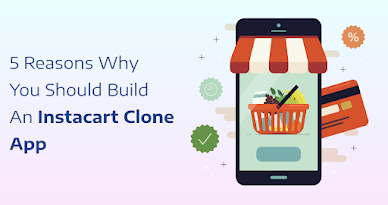In today's fast-paced world, convenience and efficiency are paramount. This has led to the rise of on-demand services, particularly in the realm of home maintenance and repair. Handyman app development has emerged as a transformative solution, connecting homeowners with skilled professionals swiftly and conveniently. This article delves into the evolution of home services through handyman app development, highlighting its benefits and essential features.
The Evolution of Home Services
Traditionally, finding reliable handyman services involved a tedious process of referrals, phone calls, and scheduling. This often led to delays and uncertainty. However, with the advent of handyman apps, the landscape has undergone a significant transformation. These apps act as digital platforms where users can browse, book, and pay for a wide range of home services seamlessly.
Benefits of Handyman App Development
Convenience: Perhaps the most significant advantage of handyman apps is the convenience they offer. Users can access a variety of services from their smartphones, anytime and anywhere. Whether it's plumbing repairs, electrical work, or carpentry, finding a skilled professional is just a few taps away.
Wide Range of Services: Handyman apps typically offer a diverse array of services to cater to various home maintenance needs. This includes general repairs, appliance installation, painting, cleaning services, and more. The ability to access multiple services from a single platform enhances user satisfaction and loyalty.
Transparent Pricing: Transparent pricing models ensure that users know the cost of services upfront, eliminating surprises. Users can compare prices and choose services that fit their budget, fostering trust and transparency.
Quality Assurance: Many handyman apps vet their service providers rigorously, ensuring that only qualified professionals are listed on the platform. This quality assurance gives users peace of mind, knowing that their home is in capable hands.
Real-Time Updates and Communication: Handyman apps often incorporate features like real-time job status updates and instant messaging, allowing users to track service progress and communicate with service providers easily. This real-time communication enhances efficiency and customer satisfaction.
Essential Features of Handyman Apps
To ensure the success of a handyman app, certain features are essential:
User-Friendly Interface: An intuitive and easy-to-navigate interface is crucial for user adoption. The app should allow users to browse services, view profiles of service providers, and book appointments effortlessly.
Service Provider Profiles: Detailed profiles of service providers, including their qualifications, certifications, and customer reviews, help users make informed decisions.
Real-Time Booking and Scheduling: The ability to book services instantly and schedule appointments at preferred times enhances user convenience.
Secure Payment Options: Integrating secure payment gateways allows users to pay for services electronically, ensuring transactions are safe and convenient.
Rating and Review System: A robust rating and review system enables users to provide feedback on services received, helping maintain service quality and provider accountability.
Geolocation and Navigation: Geolocation features assist users in locating nearby service providers and tracking their arrival in real-time.
Developing a Handyman App
Developing a successful handyman app requires careful planning and execution:
Market Research: Understand the local market demand for home services and identify your target audience's needs and preferences.
Technology Selection: Choose a reliable technology stack that supports the scalability and security of your app.
User-Centric Design: Prioritize user experience (UX) and user interface (UI) design to create an engaging and intuitive app.
Partnering with Service Providers: Establish partnerships with skilled professionals and onboard them onto your platform after thorough verification.
Testing and Iteration: Conduct extensive testing to ensure app functionality, usability, and security. Gather feedback from beta testers and iterate based on their input.
Launch and Marketing: Plan a comprehensive launch strategy to generate buzz and attract initial users. Utilize digital marketing channels, social media, and partnerships to promote your app effectively.
Conclusion
Handyman app development has revolutionized the way home services are accessed and delivered. By leveraging technology to connect homeowners with skilled professionals efficiently, these apps enhance convenience, transparency, and service quality. Whether you're a homeowner seeking quick repairs or a service provider looking to expand your clientele, a well-developed handyman app can transform the home services industry, making home maintenance simpler and more accessible than ever before.



















